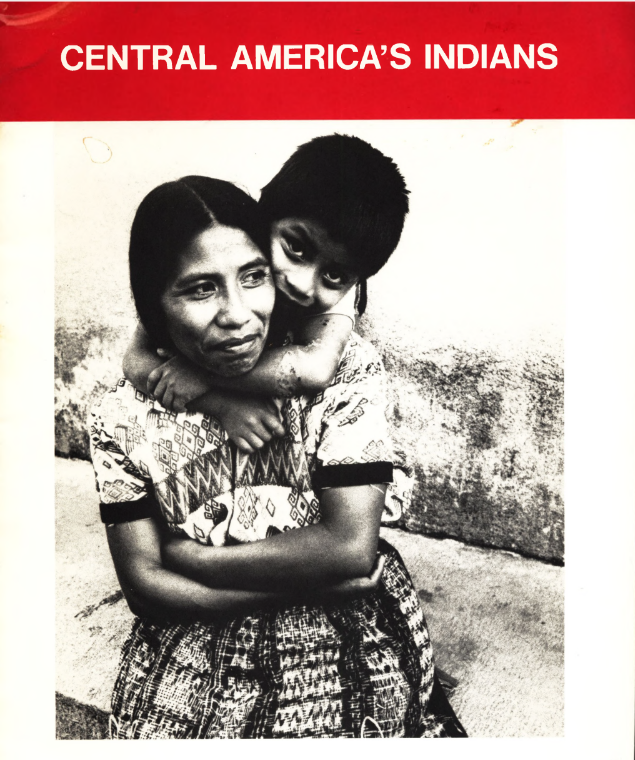Profile
The most numerous indigenous people in Panama are the Ngäbe (comprising over 60 per cent of the indigenous population) and are closely affiliated with a small group known as Buglé. Both communities were previously referred to as Guaymi, although this is considered outdated. Ngäbe-Buglé traditionally live in the western provinces of Bocas del Toro, Veraguas and Chiriquí. However, many Ngäbe-Buglé have migrated to other parts of Panama in search of employment.
Historical context
Most Ngäbe-Buglé live in simple small jungle settings and identify with their communities much more than with ethnicity, which in turn affects their level of national political organization.
The Ngäbe-Buglé organized in the latter twentieth century to protect their land and culture. Their society was disrupted by the spread of banana plantations, the construction of the Inter-American Highway through their territory, and the appropriation of their communal lands by mestizo peasants and cattle ranchers.
The 1972 Constitution required the government to establish ‘comarcas‘ or reserves for indigenous peoples, but this policy was not universally implemented.
The erosion of their lands caused many to leave and join Panama’s migrant workforce where they were generally given the lowest paid and most physically damaging jobs.
However, development projects like the Cerro Colorado mining project put Ngäbe-Buglé ancestral lands in peril and prompted them to organize politically.
Current issues
After years of protest beginning in 1972, in the year 1997 the Ngäbe-Buglé were granted their own comarca (reservation). Nevertheless, Ngäbe-Buglé leadership complained that the allocation covers too little of their ancestral grounds so most Ngäbe-Buglé would end up living outside the reserve. The Ngäbe-Buglé claimed that the government withheld rights to most of their land because of its interest in the mineral resources on their traditional territories.
Inadequate social services continue to be the major issue in the remote areas where Ngäbe-Buglé comarcas are located. Although the Panamanian government is committed to children’s rights and welfare, these benefits often do not reach Ngäbe-Buglé areas. The Constitution establishes free compulsory public education up to the 9th grade but indigenous children are not always able to attend school due to financial and economic constraints, lack of schools in their immediate areas or conversely the costs of transport, and insufficient government resources.
In the country’s sugar, coffee, and banana plantations, Ngäbe-Buglé continue to work under worse conditions than their non-indigenous counterparts. They frequently do not receive the basic rights provided by the Labour Code including minimum wage, social security benefits, termination pay and job security.
Like other indigenous communities, the problem of child labour in agricultural areas also affects the Ngäbe-Buglé. Migrant Ngäbe-Buglé families leave their isolated reserves in search of income. During the harvest of sugar cane, coffee, bananas, melons and tomatoes, farm owners often pay according to the volume harvested, leading many Ngäbe-Buglé labourers to bring their young children to the fields to help with the work.
Due to inadequate education and poor Spanish language skills members of this group are often unaware of their rights and fail to employ legal channels when threatened. In addition, legal tribunals are unavailable in their comarcas, which in general do not receive much government attention or social investment.
While the National Assembly has now dedicated three seats for Ngäbe-Buglé legislators, community members continue to be sidelined from major decision making, including various developments that impact directly on the community.
After protesting locally for several months, in March 2008 the Ngäbe of Charco La Pava, District of Changuinola, Province of Bocas del Toro, in Western Panama launched an urgent appeal soliciting the help of the international community in ending the construction of the Changuinola hydroelectric dam on their traditional lands. This included taking their case to the Inter-American Commission of Human Rights (IACHR) in Washington DC with the help of international rights advocacy groups. In May 2009, James Anaya, the UN Special Rapporteur on the rights of indigenous peoples visited the affected communities. From the outset, the Ngäbe-Buglé population in Changuinola had reported coercion, bribery and intimidation by AES Corporation, the company leading the hydroelectric project.
Subsequently, Anaya issued a report in November 2009 which culminated in an IACHR petition calling for the Panamanian government to suspend the project pending further investigations. Nonetheless, the request was ignored by the government and the US$600 million project was completed by 2011, displacing around 1,000 Ngäbe residents.
Soon after, a highly controversial hydroelectric project known as the ‘Barro Blanco’ dam was approved without the free, prior and informed consent of the communities affected, who stand to lose their entire way of life. In September 2016, members of the Ngäbe-Buglé General Congress rejected the planned completion of the dam. However, in December 2016 Panama’s Supreme Court ruled in favour of the project, deeming Barro Blanco as a matter of ‘public interest’. Since the flooding of the river, the crops cultivated by Ngäbe-Buglé communities have been devastated and the area is plagued by mosquitoes. In May 2018, the Tabasará River was drained for maintenance work on the dam, wiping out local fish stocks and leaving Ngäbé-Buglé communities with no source of protein.

